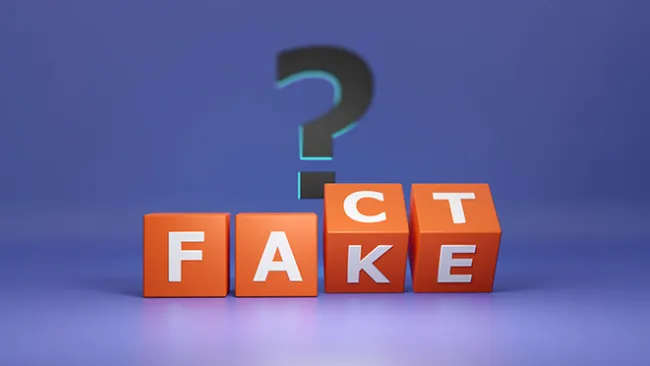Business leaders and customers alike know how we do business has changed, but are we truly acting on it or merely observing? In the second episode of TTEC's "Redefining Value" podcast series, Mary Nelson sits down with Matt Benjamin, US & Canada Operations & Technology Customer Engagement Leader at Mercer, to learn more about what customers value and how to meet these expectations head on.
Key takeaways:
- Customers are placing a more heightened degree of value on instant, or real-time, access to information, transactions, and connections.
- Customers value easy, effortless experiences, not only on digital channels but traditional ones as well.
- Customers expect brands to have their back, share in their values, and care about them with respect to the product or service they're providing.
Transcript:
Mary Nelson: Today we're talking about value in the CX world. This is an ideal time for contacts and our operators, or CX leaders, to rethink what they truly value and what customers truly value. Let's talk about value and all things CX with Matt Benjamin. Matt is a seasoned strategy product management and operations leader with more than 20 years experience. He currently works as a partner at Mercer in charge of US and Canada customer engagement operations and technology. Welcome, Matt.
Matt Benjamin: Thank you. Thanks for having me.
Mary Nelson: Of course. Let's talk a moment about value creation in a post-COVID world. What customers valued before the pandemic has, in many cases, changed. For example, over the past year customers, who may not have used digital channels in the past, are surely using them now. Another example would be a person whose employment was impacted by COVID. He or she wasn't as cost sensitive prior to the pandemic, but now pricing becomes a huge value driver. Other customers value things like purpose driven companies, companies that align with the customer's personal values, such as driving sustainability or going more green. Matt, what are your thoughts on what's changed? And what are you seeing in what customers value?
Matt Benjamin: Yeah, sure. Great question, Mary. I think we can definitely all agree that the world is a much different place than it ever has been before. And as a result of that, customer expectations have definitely evolved. I think there are three things that have really emerged over the past, maybe, 12 to 18 months as we've been going on this little bit of a rollercoaster. That when you package them all up together, they form a really interesting, maybe, new view on value from the customer's perspective.
First, without question, is, in my opinion, the need for speed. If weren't already tethered to our digital devices, we definitely are now. I mean, it's almost a little overboard. Literally, I go to bed and wake up with my phone next to me, I think. Wait, did I just say that out loud? Seriously though, we're constantly connected to friends, or family, colleagues, and the companies that we choose to do business with via these digital devices or digital means. It's like we're traveling in the fast lane 24/7. That said, I think customers are placing an even more heightened degree of value on instant, or real-time, access to information, transactions, or even connection. That can span anything from ordering delivery to updating insurance coverage to connecting a Bluetooth device to joining friends, maybe, virtually for a happy hour.
Second in that three-legged stool is the need for ease. Not only are customers looking for fast, but they're looking for the experience to be simple. They want it to be effortless. They just want it to be downright easy. With the digital channel environment, easy is simply a requirement, but the same holds true with the more traditional channels just the same. Easy has become enabled by the power of data, the power of platform integration, automation. And customers have come to recognize when it's working well on their behalf and when it's not. As a result, we've got a real heightened sense of value being placed, I think, on ensuring that the CX is absolutely easier than ever.
And then, the last leg of that stool, in my opinion, is simply the need for care, or should I say, to feel cared for. I think customers are truly expecting the companies that they choose to do business with, they're more than simply providers of products or services. But rather, they're companies that have their customer's back, share in their values, care about them with respect to the product or service they're providing. And above all else, clearly want to get it right for the customer. I think customers are gravitate towards those companies and the experiences that are both really tailored for them and evidence that level of care, which has become so important to many.
Mary Nelson: Absolutely, so true. And everything you're saying is spot on. You talked about different channels and the usage of different channels over the past year. You talk generally. What impact are you seeing in your contact center?
Matt Benjamin: Yeah. It's pretty amazing to watch some of those customer behaviors change, and to continue learning how to adapt to them. I'll say this, the CX and contact center space, and this may sound a bit corny, but it's a fun space to be in. On the one hand, you're ensuring you're running your day-to-day operations to service your customers in the best way possible, whether they're calling, chatting, emailing, those traditional channels that we think of. While at the same time, you're evolving the ways to provide support to your customers to minimize the need for them to even have to call, or chat, or email through the use of those automated or digital channels. So you're constantly wearing these two hats, maybe sometimes a third, or a fourth potentially.
I think what we've seen, what's great to see over the past maybe one to two years as we've been down the path, is that as more and more digital channel options have become available, actually, more and more customers are really gravitating towards them, and they're leveraging them to get what they need, when they need it. The digital channel options, they range from anywhere from virtual assistant types of chat box, to self-service enhancements in IDAs, proactive messaging via email or SMS, or maybe additive capabilities through digital self-service websites. All things that we've been down the path deploying and launching and making available.
As a result, we've been seeing that increased utilization in those digital channels, while the traditional channels are starting to taper off a tad. But what's still coming through those traditional channels is now the stuff that really matters. It's the more complex, more meatier stuff. The truly value added conversations, which, at least right now, are still best served through that live interaction with a person that you connect with.
Mary Nelson: We'll be right back.
Ad: These days companies need to be ready for anything when it comes to the customer experience. Speed and agility are critical. That's where CX, as a service, comes in. As a new way to transform customer and employee experiences. Check out TTEC's new strategy guide, CX as a Service for the Future of Customer Experience, to learn more about this innovative new approach to the end-to-end experience. Get it today at https://www.ttec.com/customer-experience-as-a-service.
Mary Nelson: Have you received anything, over the last year, that surprised you that you didn't expect, as far as some of the changes in customer behavior and how it's impacting the contact center?
Matt Benjamin: Yeah, interesting, population and demographic. I think one thing that has been on the forefront has been who's using these digital channels? Is it the younger generations? Is it the more technical or maybe professional services types of demographic from a worker's standpoint? I think what's been interesting is it's touched all types of people. People that are actively employed at companies, retirees who are transitioning or already have retired, both folks in things like technology or professional services organizations to things like transportation and retail. There's no longer, really, that delineation of, well, this population is not going to use these digital channels. It's been a nice spread of folks, and I think that's what we see. That we're all consumers in one way or another. We've all got an email account, for the most part. We're all texting somebody. We're all somewhat digitally savvy, in one form or fashion, or another.
Mary Nelson: That is so, so true. Let me ask you. You've been involved in a lot of transformation initiatives over the years focusing, specifically, on automation and AI. What have you learned through those initiatives?
Matt Benjamin: Well, answering this one could go totally sideways, but I'll try to prevent that from happening. I think the first thing is transformation through things like automation, digital engagement, artificial intelligence, it's a journey. It's all achievable, but it does take a little bit of time. And by that, I mean, it's not going to be something that's solves every problem you might have overnight. But, as we all know, practice makes perfect, so the key is to start practicing, start testing, start learning, and then continue to evolve from there.
For example, think about launching a chat bot for the first time. Start with a few intents that enable your entry into virtual assistance. Don't shoot the moon. Keep it relatively simple. Learn from it. And then graduate to, maybe, start thinking about, maybe, some automated workflows, or evolving the transactional experience. Take a building block approach, that's going to be key. I think that's probably one of the key things that I, and the team, has learned over the years. But most importantly, I think the key thing is to ensure that what you're doing is focused on the customer. It's solving something for them, that actually provides value. And they can go back to those three value drivers: is it efficient, is it going to be easy, and can you get it right and show that customer that you really care.
Mary Nelson: That's great advice. Let's talk about effortless experiences, because you talked about that earlier in the conversation. The whole trend of effortless experience has been around for a while, but it's much easier said than done. What have you all been doing to deliver more effortless experiences?
Matt Benjamin: Yeah, great question. Since we did talk a little bit already about, maybe, some of the tactics via those digital channels, I might answer this one a bit differently. Because, honestly, I think there's really something that sits above all of those things you can do via technology and via process. And it starts with something that, in my opinion, is just really important and what we've been focused on, and that's people. Getting the customer experience right starts with people. What I mean by that is, building a team, or building a culture of customer centric colleagues that are passionate about really making a difference for the customer. Making the experience easy. Demonstrating that level of care.
It's regardless of whether it's the frontline contact center teams, who are talking to customers each and every day, or the development teams that are in the background coding the next new sprint of capabilities to be released or whatnot. If they're focused on the customer, they're aligned on great CX, it's going to be great things. It's going to mean great things for everyone that spans the customer experience. The colleagues doing the work and extents to the company, themselves. I think that's really been the focus of what we've been anchored on, on ensuring effortless experiences, is instilling that culture, that customer centric culture with our people.
Mary Nelson: So important, it really is. We've talked a lot about the customer perspective, but we really haven't talked about the employee experience. But in order to really have great CX, you really have to have great CX, or employee experience. Tell me about that from your perspective. Are you guys doing anything differently, when it comes to empowering your agents?
Matt Benjamin: Yeah. I think there's some strong parallels. The same types of things that are on the forefront of our minds for solving for the CX side of things, we are now starting to introduce into the EX side things. If you think about that heightened level of virtual assistance, one side of that, or an angle for that is the customer, the other extends, maybe, to the folks that are on the frontline serving those customers when those interactions do come in. How can they get access to the information easier, faster, better that makes their responses that much crisper, cleaner, and shows that level of care? Same thing with things like automated workflows. How burdensome is it to have to take five, six, seven clicks, or steps, in order to get done what you need to get done? Can we stream some of that stuff together? Automate it in a workflow, so that folks can get onto the next thing, as opposed to being bogged down by multiple clicks, multiple presses, and just make their life a little bit easier for the work that they do.
I think there are some really good parallels between both CX and EX that we can all take learnings from and apply. Once you've started, maybe, that one path, you can then apply that into the other side.
Mary Nelson: Right, makes sense. Makes a lot of sense. Well, that's our time for today. I just want to say thank you, Matt, for joining us for this really great conversation. It was a great opportunity to not only talk about value, but what you're doing differently in this new world. We're going to be interviewing more contact center practitioners and CX gurus, so please tune in again for the CX Pod. We'd love to continue the conversation with you. Thanks again, Matt.
Matt Benjamin: Thank you, Mary, pleasure to be here.
Mary Nelson: Thanks for listening. Look for more CX insights by subscribing to the CX Pod, where you get your podcasts, or visit us at thecxpod.com, or ttec.com. Thanks, see you next time.














